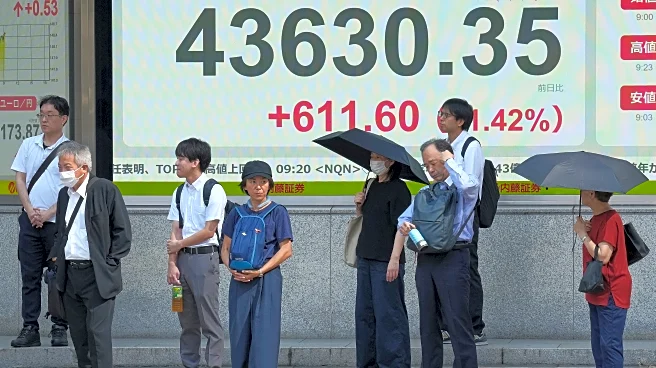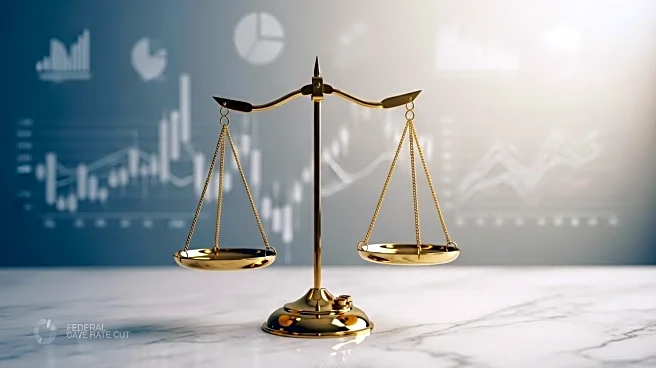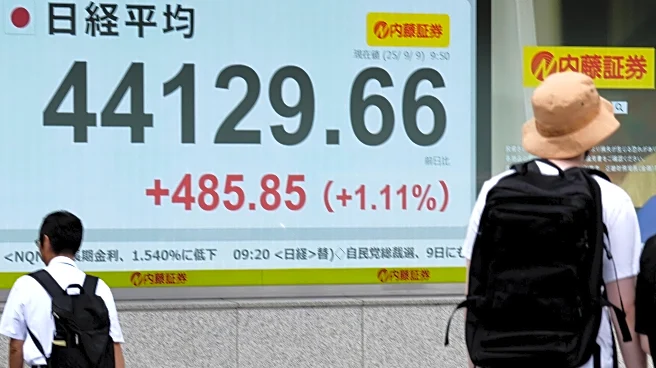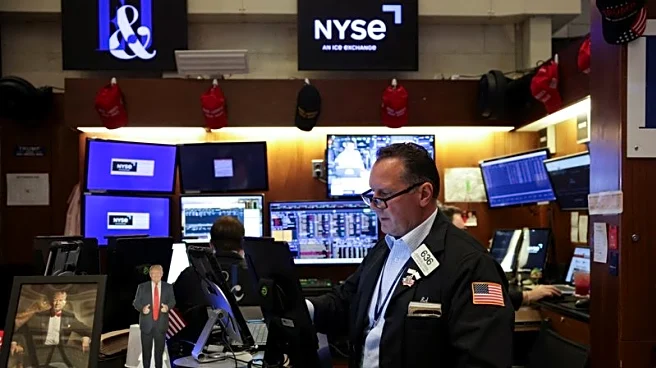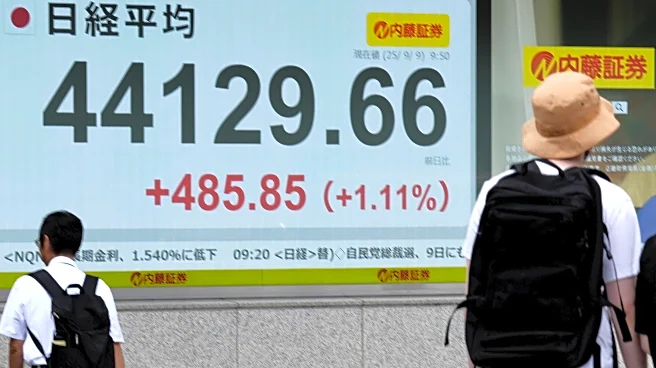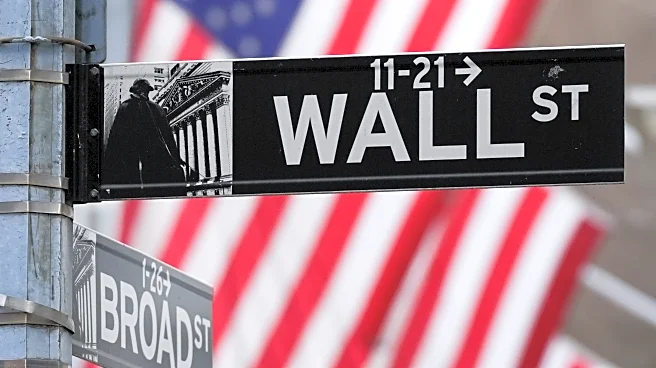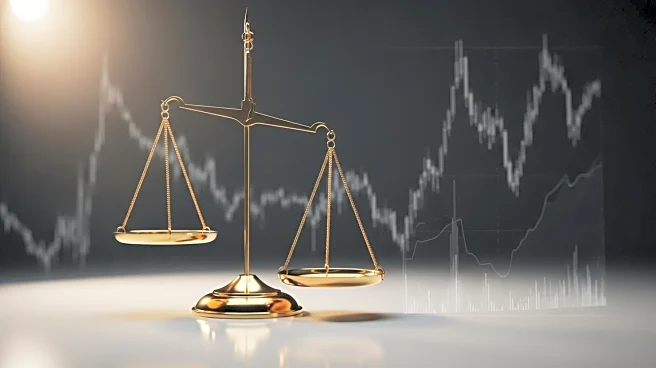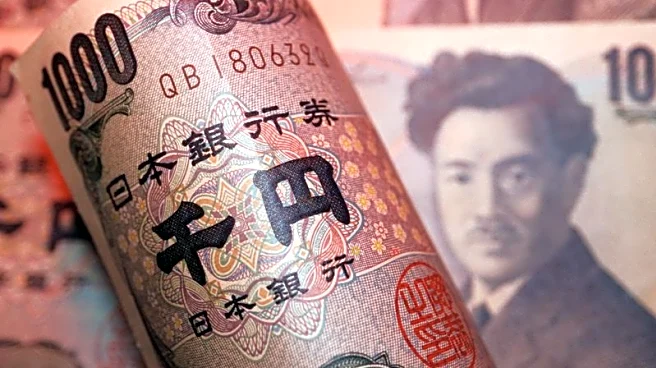What is the story about?
What's Happening?
The U.S. dollar has continued its decline following a weak non-farm payrolls report released last Friday, which has heightened expectations for an interest rate cut by the Federal Reserve. The report indicated a significant drop in job growth for August and an increase in the unemployment rate to 4.3%, the highest in nearly four years. This has led to a 0.4% decrease in the dollar index, which now stands at 97.51. The dollar also fell against the Swiss franc, reaching its lowest level since July 24. Meanwhile, the yen has retreated following the resignation of Japanese Prime Minister Shigeru Ishiba, contributing to a period of policy uncertainty in Japan. Analysts suggest that the primary driver of the dollar's movement is the anticipated U.S. interest rate cut, with Fed funds futures pricing in a 90% chance of a 25 basis-point cut and a 10% chance of a 50 basis-point cut.
Why It's Important?
The potential interest rate cut by the Federal Reserve is significant as it could influence the broader U.S. economy, affecting borrowing costs for consumers and businesses. A lower interest rate typically aims to stimulate economic activity by making loans cheaper, which can lead to increased spending and investment. However, it also impacts the value of the dollar, making U.S. exports more competitive but potentially increasing the cost of imports. The decline in the dollar could have mixed effects on various sectors, including manufacturing and trade. Additionally, the political uncertainty in Japan following Prime Minister Ishiba's resignation may affect global markets, particularly in terms of currency exchange rates and international trade dynamics.
What's Next?
The Federal Reserve is expected to make a decision on interest rates at its upcoming policy meeting later this month. Market participants will be closely watching for any signals from the Fed regarding the size of the rate cut, if any, and its future monetary policy stance. Additionally, the resignation of Japan's Prime Minister may lead to changes in fiscal and monetary policies, depending on his successor's approach. Investors will be monitoring these developments for potential impacts on global financial markets and currency valuations.
Beyond the Headlines
The ongoing scrutiny of the Federal Reserve by the Trump administration, including its power to set interest rates, highlights the political dimensions of monetary policy. President Trump is reportedly considering candidates to replace Fed Chair Jerome Powell, which could lead to shifts in the central bank's approach to interest rates and economic management. This political influence on monetary policy could have long-term implications for the independence of the Federal Reserve and its ability to manage economic stability.
AI Generated Content
Do you find this article useful?




